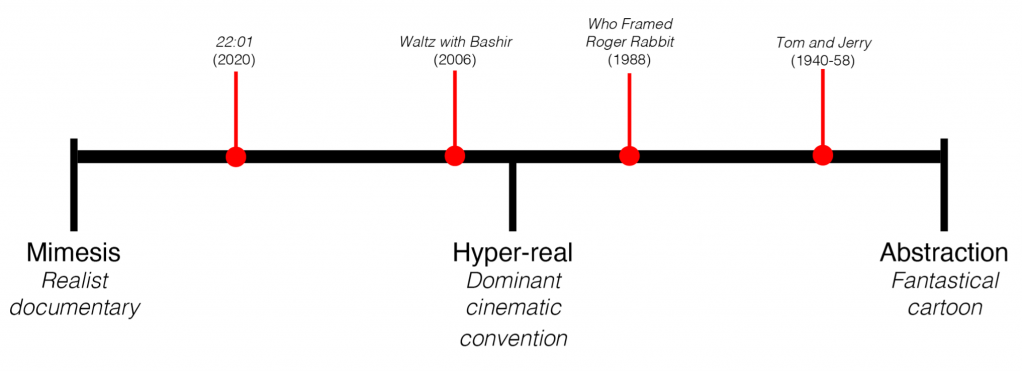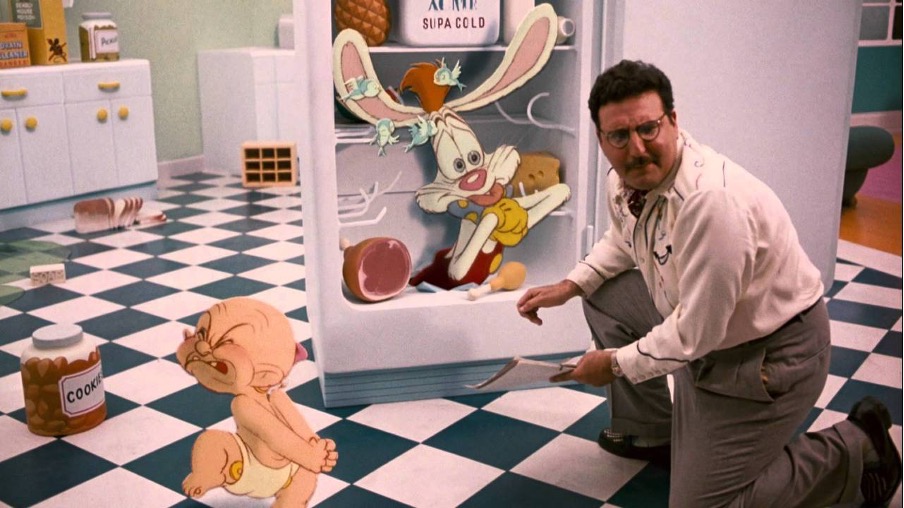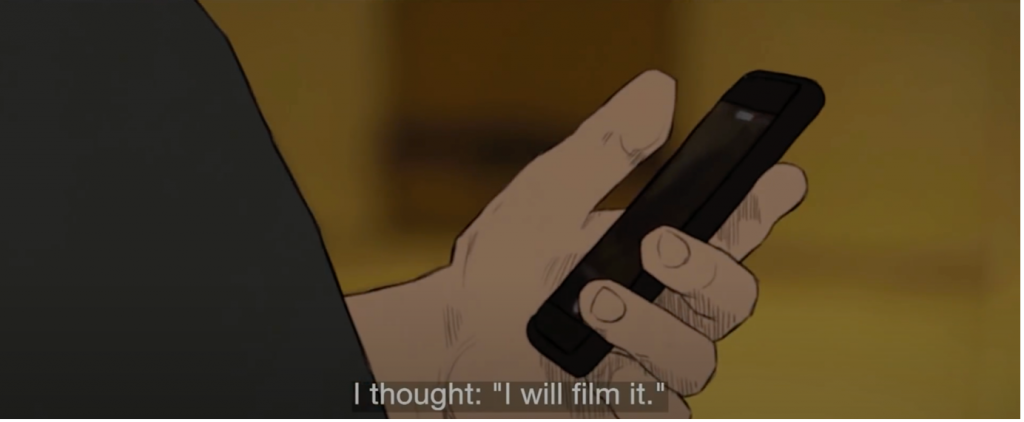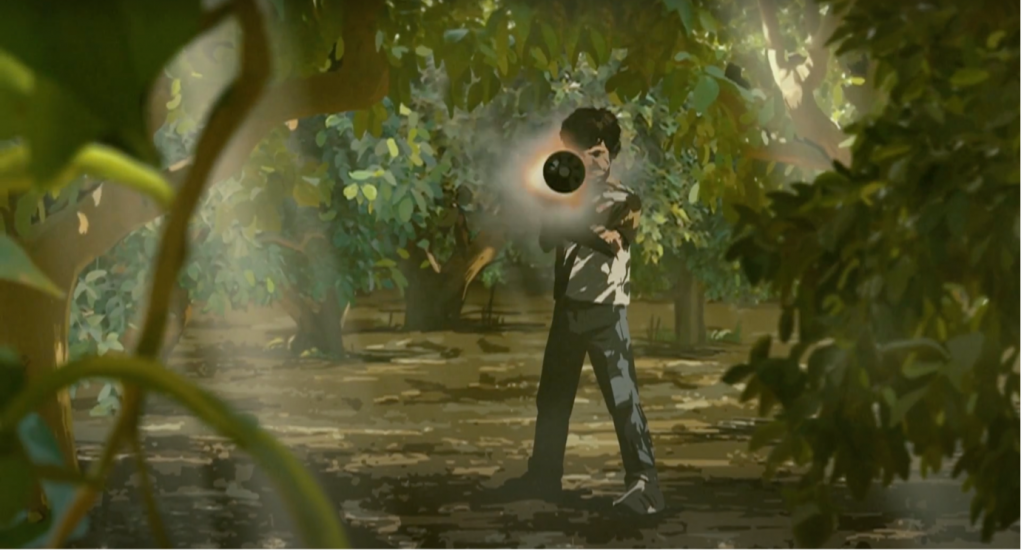Violence and animation have a long-established bond. Through Tom and Jerry (1940-1958) and Looney Tunes (1930-1969), animated violence has developed a reputation as a comedic tool, but is also a common subject for animated documentaries with a serious ‘truth-telling’ agenda. This relationship with violence may stem from a visual freedom in animation that can traverse the representational boundaries of acceptability and taste, otherwise not afforded to a live-action counterpart (see Wells 1998, 127). Yet, animation is not only a visual medium but an aural medium too. This post will consider sound’s role in representing violence.
As early as 1908, Émile Cohl used animation to inflict pain on characters in his silent film Fantasmagorie (1908) which included stabbing, decapitation, and death by a champagne cork. When sound was introduced, the representation of violence became more visceral. Often accompanied by a synchronized ‘Mickey-Mousing’ score or exaggerated impact sound effects, animation explored the brutal treatment of cartoon characters through comedy. Since the musical abuse of animals in Steamboat Willie (1928), sound has been responsible for softening violence and making it palatable for young audiences through humor with synchronous techniques playing a significant role in distancing representations from reality (see Connor, 2019).
The questionable acceptance of violence in cartoons aimed at children has been reflexively lampooned and critiqued through animation. For instance, the “Somethin’s Cookin’” sequence from Who Framed Roger Rabbit (1988) tackles the issue by breaking the fourth wall into the film’s diegetic reality, where cartoon violence is recontextualized against new ‘realism’ standards. When Roger pleads, “Just drop the refrigerator on my head one more time… I can take it though, don’t worry about me”, he introduces a concept of animated characters as ‘actors’ subjected to a series of head traumas, electrocution, and extreme heat (Figure 1). It shifts the status of representations from ‘accidental’ to ‘inflicted violence’ with the scale of each incident brought closer to the audience’s reality. Paul Wells (1998, 244) has identified the impacts of the film’s visual treatment noting that, “When animation interacts with live action representations of the real world, it essentially defines the limits of space, [and] the weight of objects”. The cartoon sound requires additional acknowledgment for the audience. The director shouts “Can we lose the playback please” to end the continuing ‘Mickey-Mousing’ music that accompanied the scene, foregrounding its role in softening the extreme violence. The sequence thus bridges a gap between animation and reality, inviting audiences to question representations of sound and vision against a realist framework.
Compared to cartoons, documentary has a perceived affinity with accurate representation. Similarly, animation is often used to tackle that which cannot be shown, or would not be appropriate, through live-action; Ruth Lingford’s representation of orgasms in Little Deaths (2010) is one example. This ‘substitutive’ quality (see Honess Roe, 2013) has rendered animated documentary useful for representing violence of a ‘real’ and traumatic nature. 22:01 (2020) is a documentary about the Bataclan, Paris attacks in 2015. Le Monde journalist, Daniel Psenny, recorded the event on his phone, capturing people escaping the concert hall (Figure 2). The film contextualizes this live-action footage and tells a further story of Psenny and his neighbors’ experiences through an animated re-enactment of their testimony. 22:01 adheres to documentary sound traditions, taking Psenny’s recording as a stylistic guideline for the occasional reconstructed scenes that employ diegetic effects, foley, and what Michel Chion (1994, 75) terms, ambient (or territory) sounds. This helps to embed the visual, where animation is superimposed onto live-action footage, in a realist context. Whilst the informed aesthetic aligns with documentary tradition, the violent sounds are still constructed, following typical fiction processes.
However, not all animated documentary sound is concerned with a documentary integrity. Waltz with Bashir (2008) retells collected memories from soldiers, during the Lebanon war. Limited by access to photographic evidence, ‘substitutive’ animation represents the violent atrocities experienced. Sound designer Aviv Aldema notes a struggle during production between two schools of thought, one of a proportionate, convincing, low-key documentary approach, and the other, an action-packed Hollywood war movie. Aldema identifies a scene where a young boy shoots at the soldiers with a rocket-propelled grenade, as an example of the struggle (see Figure 3). A slowed fire extinguisher release sound for the grenade launch, followed by a full-scale cinematic explosion, illustrates each respectively. This struggle is most apparent in the violent scenes across the film, usually resulting in a mainstream cinematic soundscape.
Across these examples, animation sound ranges from fantastical comedy to gritty ‘authenticity’. By adapting a comparative approach established by Furniss (1998), I have plotted these sound design choices on a continuum. Furniss presents a scale from ‘Mimesis’ to ‘Abstraction’, suggesting these opposing poles can represent ‘natural reality’ and ‘pure form or concept’ accordingly (see Figure 4). But unlike Furniss’s visual assessment, the abstract or mimetic qualities of sound do not always align with the visual. Listening to violent cartoons, the sound is often abstracted from reality. A mimetic quality may drive animated documentary but can prove difficult to achieve due to conflicts with a ‘substitutive’ use of animation. When these animation types cannot fulfill either end of the continuum, they find themselves as a blend of the two, often resulting in a hyper-real sound design reminiscent of Hollywood cinematic convention.

These heavily constructed approaches may often seem more ‘real’ to audiences due to familiarity. In 22:01, Psenny’s neighbors use cinematic convention as their own frame of reference. One neighbor explains that being on a film set with fake blood prepared her for the reality of violence, whilst another reflects on the experience as “like a movie scene”, highlighting cinema’s ability to make ‘real’ violence comprehendible.
Through analysis of these films, I argue that cartoon sound acts as a comparative tool for audiences’ assessment of sound design’s relationship with reality. If our expectation of animated violence is rooted in comedic impact sounds, ‘Mickey-Mouse’ synchronized music, and diffusing one-liners, our critical threshold is lowered when meeting a text with a ‘truth-telling’ intent. We are more vulnerable to accept cinematic (as opposed to documentary) conventions without question because they sit closer to our perception of reality than abstracted cartoon representations. This risks a loss of critical focus on the constructed nature of non-fiction sound practice.
References
Chion, M. (1994) [1990] Audio-vision: Sound on Screen, trans. Gorbman, Claudia, New York: Columbia University Press.
Connor, A. (2019) ‘Synchronization and Synchresis: Avoiding ‘Mickey-Mousing’ in Sound Design’, Animation Studies 2.0, Available at: http://blog.animationstudies.org/?p=3216 (Accessed: 28 September 2021)
Furniss, M. (2014) Art in motion: animation aesthetics, Herts, England: John Libbey Publishing
Honess Roe, A. (2013) Animated Documentary, Basingstoke: Palgrave Macmillan.
‘Making of Documentary’ (2009) Waltz with Bashir [Blu-ray, ART003BD]. UK: Artificial Eye.
Wells, P. (1998) Understanding Animation, London and New York: Routledge.
Joe Sudlow is an MPhil/PhD student at University of South Wales and a Lecturer in Creative Industries at Cardiff and Vale College. His current research project examines aural representations of reality in animated documentary filmmaking. Through a career in postproduction sound, he has worked on a range of television, radio, film and screen arts productions exhibited through broadcast (BBC, Channel 4, and Disney) and in competition at international film festivals (Oberhausen and Sundance).



